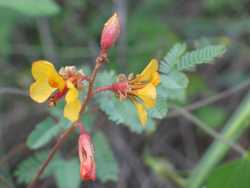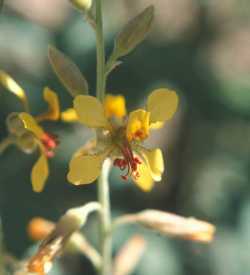Duration: Perennial
Nativity: Native
Lifeform: Subshrub
General: Perennial herb, 15-30 cm tall, from deeply buried, creeping rhizomes; stems usually several, renewed annually or seasonally; herbage with occasional stalked reddish glands and sparse, short white hairs.
Leaves: Alternate, with most leaves attached near the base of the plant; leaves bipinnately compound, 5-13 cm long, with 5-11 pinnae, each pinna with 4-12 pairs of leaflets; leaflets oblong, 3-8 mm long, glabrous or minutely puberulent; at the base of each petiole there is usually a small cluter of stalked red glands.
Flowers: Yellow, in terminal racemes usually held above the leaves; flowers not quite radially symmetrical, with a gap between the 2 lowest petals; sepals 5, linear to linear-oblong, 7-8 mm long, glandular-pubescent; petals 5, bright yellow and fading to reddish, 1 cm long, long-tapering at the base, the narrow basal portion of each petal lined with red stalked glands.
Fruits: Pods flattened and oblong, straight to slightly falcate (hooked at the end), 2-4 cm long and 5-8 mm wide, readily deciduous; containing several seeds.
Ecology: Found on sandy and alkaline soils, forming large colonies at disturbed sides such as roadsides and edges of cultivated fields, below 5,000 ft (1524 m); flowers April-September.
Distribution: s CA, AZ, NM, s CO, s KS, s OK, TX; south to s MEX, and in S. Amer.
Notes: Distinguished by being a low-growing, often decumbent to prostrate perennial herb arising from woody creeping rootstocks; the 2X pinnately compound leaves have a whitish coating (glaucous), and lack black glands on the undersides; the leaf petioles, flower stalks, and flowers have distinctive red stalked glands (use your hand lens); and the flowers are showy and yellow. Plant is considered a good soil binder.
Ethnobotany: The small tubers are collected and eaten raw, boiled, or preferably roasted; tubers are also commonly used as hog feed.
Etymology: Hoffmanseggia is named for Johan Centurius, Count Von Hoffmansegg (1766-1849) a German botanist, and glauca is from Greek meaning bluish gray, referring to the leaves.
Synonyms: H. densiflora
Editor: SBuckley 2010, FSCoburn 2015, AHazelton 2017


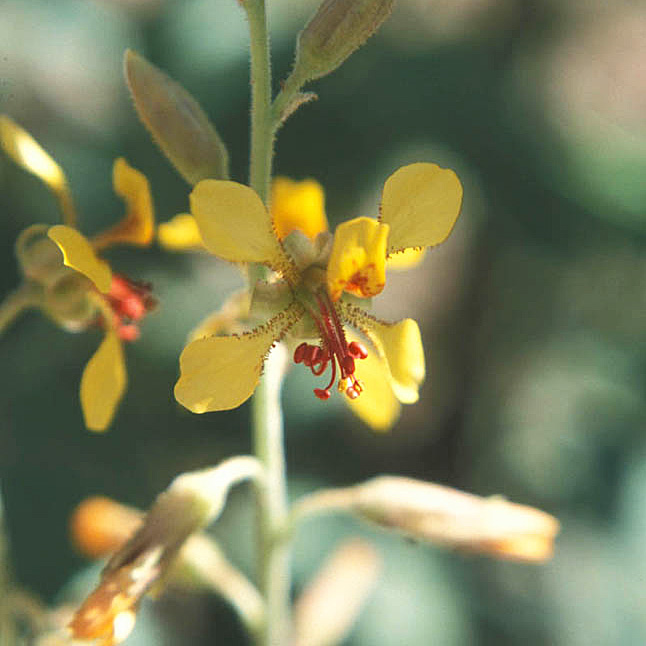
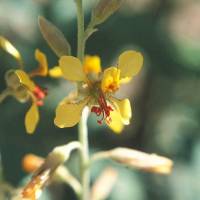



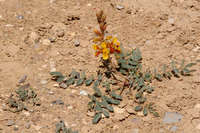
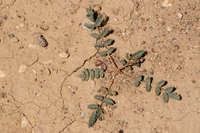

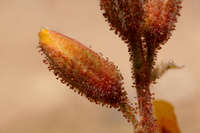
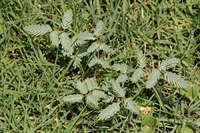
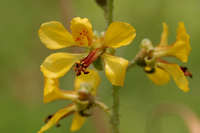
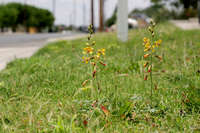
_tn.jpg)
